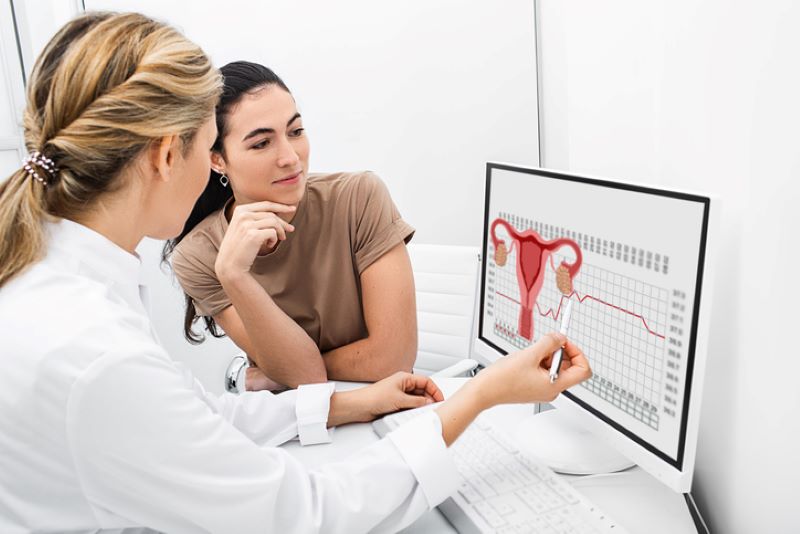
What Is Ovulation?

Ovulation is the phase of the menstrual cycle in which one of the ovaries releases a mature egg (or ovum) into the fallopian tube so that it is available to be fertilized by sperm. It usually occurs around day 14 of the menstrual cycle, or two weeks before the start of the menstrual period, assuming a 28-day menstrual cycle.
Ovulation is the most fertile phase of a person’s menstrual cycle. This means that it is the time when pregnancy is most likely to occur if the individual has unprotected intercourse. The egg that is released during ovulation survives for about 12 to 24 hours, which means that the window for conception is relatively short. However, sperm can survive in the female reproductive tract for several days, which extends the fertile period to about 5-7 days before ovulation.
Tracking ovulation may be a good idea for people who are trying to get pregnant. There are a few different methods for tracking ovulation including using a calendar, checking the consistency of your cervical mucus (a vaginal fluid made by the cervix), checking your basal body temperature, or using an ovulation kit.
The cervical mucus changes throughout the course of a person’s menstrual cycle, and it becomes clear and slippery around ovulation to make it easier for the sperm to travel through the cervix and fallopian tubes to meet the egg. Around ovulation, the consistency of the cervical mucus should be similar to that of raw egg whites.
Basal body temperature, which is your body’s resting temperature, tends to rise slightly after ovulation due to an increase in the hormone progesterone. Tracking your basal body temperature with a thermometer that is specifically designed for this purpose over the course of a few months can help you identify your ovulation pattern.
Lastly, ovulation kits work much like home pregnancy tests in that you pee on a strip that indicates whether or not you are ovulating. These kits detect the level of luteinizing hormone in your urine, which is important because this hormone increases in the body before ovulation.
Other signs or symptoms of ovulation include sore or tender breasts, bloating, minor pelvic pain, changes in mood, and/or increased sex drive. It is important to note that not all individuals experience the same symptoms of ovulation.
In summary, ovulation is the moment in the menstrual cycle when a mature egg is released from the ovary, ready for fertilization. Understanding when ovulation occurs can be helpful for people who are hoping to have a baby. Keeping an eye out for signs of ovulation and/or using an ovulation kit can help a person track their fertile window and improve their chances of successfully becoming pregnant.
References:
- Cleveland Clinic. (2022, July 8). https://my.clevelandclinic.org/health/articles/23439-ovulation
- Victoria State Government Department of Health. (2022, July 9). Ovulation and Fertility. https://www.betterhealth.vic.gov.au/health/conditionsandtreatments/ovulation



